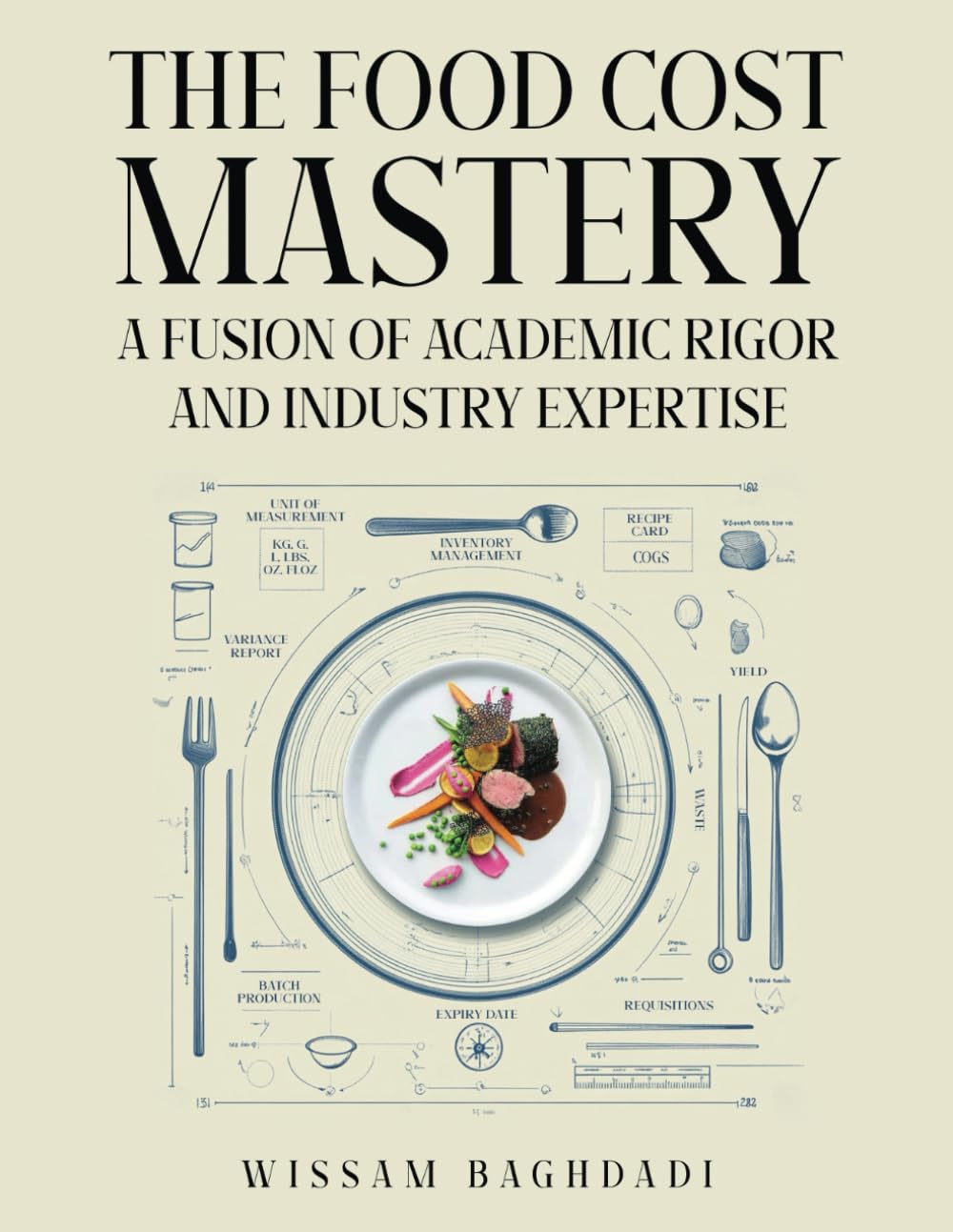
Creating a cost-conscious culture is vital for restaurant profitability, yet it requires buy-in from the entire team. In The Food Cost Mastery: Fusion of Academic Rigor and Industry Expertise, Wissam Baghdadi emphasizes the importance of aligning staff goals with cost-saving and efficiency initiatives. By fostering awareness and accountability, restaurateurs can empower employees to take ownership of operational success while maintaining high-quality service.
Why a Cost-Conscious Culture Matters
Food and labor costs are among the most significant expenses for restaurants. When staff understand the impact of waste, inefficiencies, and over-portioning, they become active participants in managing these costs. Baghdadi highlights that a united effort toward cost control not only improves margins but also enhances job satisfaction by creating a more collaborative environment.
Steps to Foster a Cost-Conscious Culture
1. Educate Staff on Food Costs
Begin by explaining key metrics like food cost percentage and gross margin, as detailed in Baghdadi’s book. Use examples to show how small actions, like reducing waste or following portion guidelines, directly affect profitability.
2. Set Clear Expectations
Define specific cost-saving goals for the team, such as reducing spoilage by a certain percentage or adhering to standardized recipes. Clear objectives make it easier for staff to understand their role in achieving these goals.
3. Provide Tools and Training
Equip your team with the tools they need to succeed:
- Portioning Tools: Scales, pre-measured utensils, and recipe cards help ensure consistency.
- Inventory Management Systems: Train staff to log inventory accurately to minimize discrepancies and reduce over-ordering.
Baghdadi recommends regular training sessions to reinforce best practices and introduce new techniques.
4. Celebrate Small Wins
Recognize and reward employees who contribute to cost-saving efforts. For instance, if a team member suggests a method to repurpose leftovers or reduce packaging waste, acknowledge their contribution during meetings or offer incentives.
5. Encourage Collaboration
Cost-saving is a team effort. Hold regular meetings to discuss challenges, share ideas, and set actionable goals. Baghdadi stresses the importance of fostering open communication so that all staff feel invested in the restaurant’s success.
6. Reduce Food Waste Through Awareness
Teach staff the importance of tracking and minimizing waste. For example:
- Prep Efficiency: Use scraps for stocks or sauces.
- FIFO (First In, First Out): Ensure older ingredients are used first to prevent spoilage.
Baghdadi notes that awareness of waste can lead to innovative solutions, further enhancing efficiency.
Measuring and Maintaining Progress
1. Track Metrics
Monitor food cost percentage, labor efficiency, and waste logs regularly. Share these results with your team to show how their efforts are making an impact.
2. Create Accountability
Assign specific responsibilities to team members, such as inventory checks or waste tracking, to promote accountability.
3. Continuously Improve
As Baghdadi emphasizes, cost-conscious cultures require ongoing effort. Regularly review processes, solicit feedback, and implement improvements to keep momentum going.
A cost-conscious culture is not about cutting corners—it’s about empowering staff to work smarter. By aligning your team’s goals with cost-saving initiatives, as detailed in The Food Cost Mastery, you can improve profitability while fostering a sense of pride and ownership among employees. Together, these efforts create a more efficient, cohesive, and successful restaurant operation.